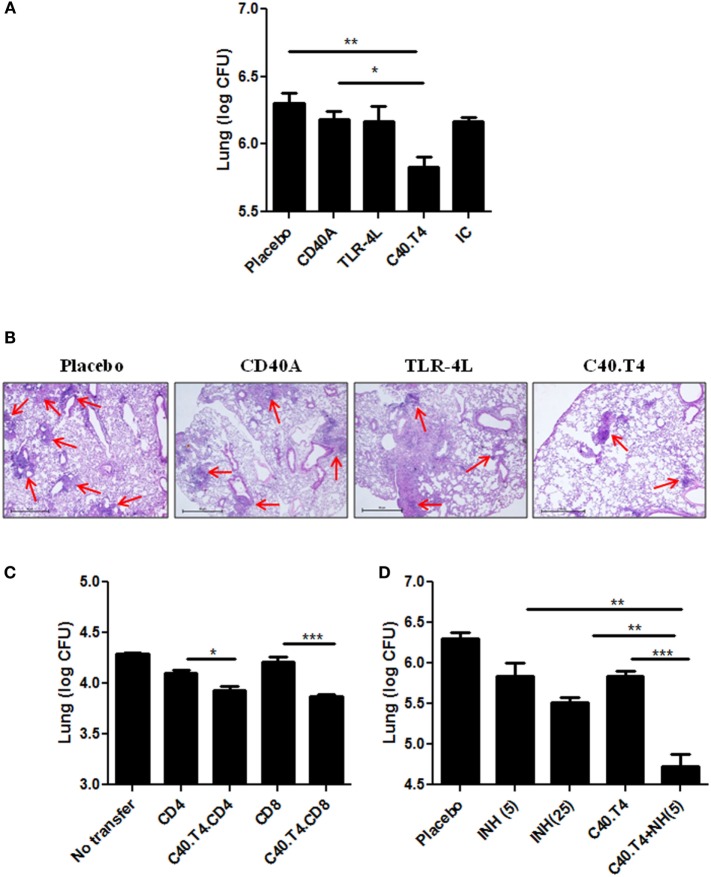Figure 8.
Immunomodulation through C40.T4 reduces the bacterial burden in the lungs of Mtb-challenged mice and enhances the potency of isoniazid. (A) Mice infected with Mtb were immunized with C40.T4. Later, animals were sacrificed and mycobacterial load in the lungs was enumerated by CFUs plating; (B) Photomicrographs (40×) of H & E stained lung sections. (C) CD4 and CD8 T cells were purified from C40.T4 treated and Mtb-challenged mice. Later, CD4 or CD8 T cells were adoptively transferred into sub-lethally irradiated mice. After 12 h, mice were aerosol challenged with Mtb. The bacterial burden in the lungs was enumerated on 15 days by CFUs plating. Labeling of “x” axis signifies CD4 or CD8: adoptive transfer of either CD4 or CD8 T cells isolated from Mtb-challenged mice; C40.T4.CD4 or C40.T4.CD8: adoptive transfer of either CD4 or CD8 T cells isolated from Mtb-challenged and C40.T4-treated mice. (D) Animals infected with Mtb were administered with C40.T4 and two doses of INH (INH5: 5 mg/kg bwt, INH25: 25 mg/kg bwt of mouse). Later, mice were sacrificed and mycobacterial load was enumerated in the lungs by CFUs plating. Data represented as mean ± SEM are from two independent experiments with (n = 4mice/group). Control groups of mice were administered PBS, CD40A, TLR-4L. “IC”: isotype control. “*,” “**,” and “***” indicate p < 0.05, p < 0.01, and p < 0.001, respectively.

